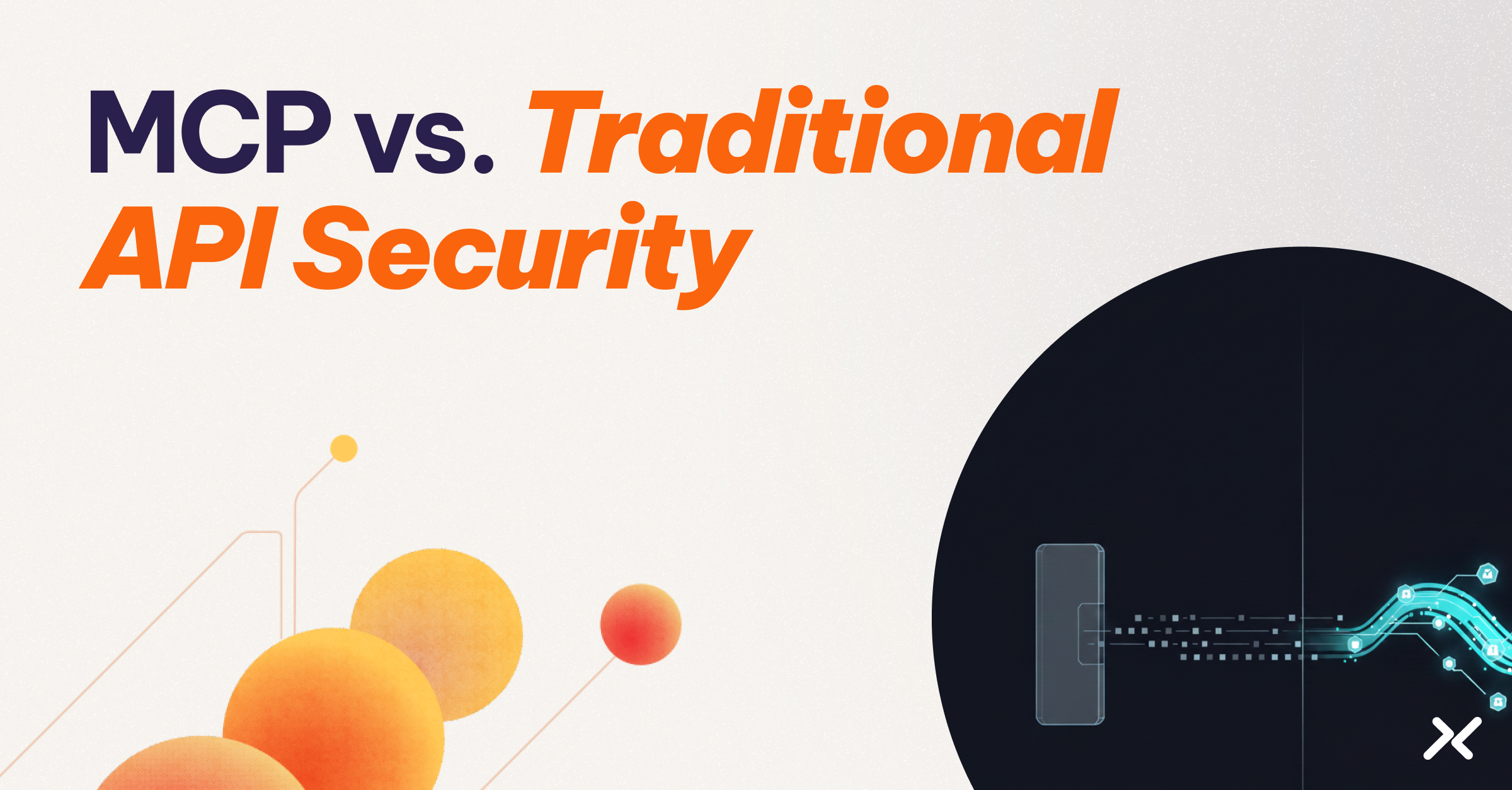Cloud-native applications rely on two core layers of protection: controlling who can access services, and securing how those services communicate.
- Workload Identity and Access Management (IAM) secures non-human identities, like services, containers, and CI/CD pipelines, by verifying who they are and what they’re allowed to access. It works best when you control the client workloads or the environment they run in, such as Kubernetes clusters, cloud VMs, or CI pipelines.
- API security, on the other hand, is built for requests, especially those coming from public-facing or partner-facing APIs, where clients are untrusted or outside your control. It protects exposed interfaces using gateways, request validation, and traffic inspection.
Most teams prioritize one or the other. But in distributed systems, both are essential and they solve different parts of the same security puzzle.
This article breaks down the difference between identity-centric and request-centric controls, highlights their complementary strengths, and offers practical guidance for deploying both in microservices environments.
Workload IAM vs. API Security: A Snapshot
| Workload IAM | API Security | |
| Primary Focus | Machine identities and internal service access | API endpoints, requests, and data flows |
| Core Use Case | Authenticate and authorize service access | Inspect and control API traffic |
| Enforcement Point | Identity issuance and policy enforcement via workload IdP or cloud IAM (e.g., Aembit, SPIRE, IAM roles, Entra WIF) | API gateways, WAFs, service mesh proxies |
| Strengths | Secretless auth, cross-cloud access, fine-grained policies | Rate limiting, request validation, protocol enforcement |
| Coverage Limitations | Addresses use cases where the client workload is known. Inspects access requests, but not data payloads. | Assume access, with no access policy enforcement. Cannot issue credentials. |
Identity Scope and Security Focus
Workload IAM secures non-human identities — including microservices, containers, CI jobs, and serverless functions — by automating their authentication and access using short-lived credentials and identity federation.
These identities require special handling due to their scale, lifecycle, and autonomy. Take a typical microservices deployment: dozens (or hundreds) of services operating across clouds, communicating continuously.
Each of these workloads needs identity, and access must be granted based on their job, context, and posture, not a shared API key or static secret.
This is the realm of Workload IAM.
API security, by contrast, doesn’t establish identity. It assumes a valid identity is already present, typically in the form of an API key, OAuth token, or JWT, and enforces access rules based on that credential. Its role is to inspect traffic and apply controls like rate limiting, schema validation, or route-based authorization.
If Workload IAM answers “who is this client and should it be allowed to connect?”, API security answers “what can this request do, and is it behaving safely?”
Credential Management
Workload IAM minimizes credential risk by eliminating static secrets. It issues short-lived, identity-bound credentials just in time, based on verified workload identity and access policy. This removes the need for hardcoded credentials or manual rotation. In practice, this might involve assigning IAM roles to services in AWS or issuing SPIFFE identities within Kubernetes.
API security tools, by contrast, don’t manage credentials. They consume them, typically API keys, OAuth tokens, or JWTs, as part of request validation.
The gateway or WAF assumes the presented credential is legitimate and uses it to apply authorization logic (e.g., scope-based access or route restrictions). The lifecycle of those credentials: how they’re issued, rotated, or validated, still depends on the upstream identity provider.
The distinction: Workload IAM systems handle credential issuance, lifecycle, and policy-based trust. API security enforces per-request behavior based on those credentials but does not establish identity.
Policy and Authorization Control
Workload IAM applies context-aware access policies, evaluating identity, environment, time, and posture. For example, a policy might allow a service to access a backend only if it’s running in production, has passed a vulnerability scan, and is invoking access during a specific time window. These policies live in a centralized control plane and enable least-privilege enforcement. The goal is to define who can act, in what context, and under what conditions.
API security policies focus on edge-layer enforcement. They cover:
- Rate limiting to prevent abuse
- Schema validation to catch malformed or malicious requests
- OAuth scope validation to authorize access by route or method
In practice, both are needed. Workload IAM controls access eligibility; API security enforces usage behavior.
Enforcement and Architecture
Workload IAM enforces access decisions in real time by issuing short-lived, identity-bound credentials (such as tokens or mutual TLS identities) at the moment a workload attempts to connect.
These credentials are evaluated and injected at runtime, based on policies that consider identity, context, and environment.
Rather than inspecting payloads or sitting inline in the traffic path, Workload IAM controls whether a connection can be made, and who can make it, before the request proceeds. This makes it ideal for controlling internal service-to-service communication without introducing latency or parsing application-layer data.
API security enforces controls inline. API gateways, WAFs, or service mesh proxies inspect every request. They block unauthorized traffic, rewrite headers, log anomalies, and apply protocol-level protections.
Inline enforcement offers deep visibility but can add latency and operational complexity. Out-of-band IAM provides scalability and native integration but doesn’t inspect request contents.
Use Workload IAM for scalable identity control. Use API security for deep request inspection and edge enforcement.
Observability and Logging
Workload IAM generates logs that answer: “Who accessed what, when, and why?” These logs support access reviews, least-privilege verification, and audit trails — essential for compliance frameworks like NIST 800-171 or ISO 27001.
API security logs show: “What was requested, from where, and what happened?” Request-level metadata (headers, payloads, response codes, latency) allows for threat detection and performance monitoring.
Both API security and Workload IAM generate logs that provide critical insights into request-level activity. The difference lies in scope: API security focuses on the external interface logging things like who called an API, while
Workload IAM monitors internal service behavior, like which service attempted to access what resource, what policy was applied, and what type of credential was issued.
Operational Overhead
Workload IAM tools are often cloud-native and no-code, integrating with existing infrastructure like IAM roles, Kubernetes RBAC, or service meshes. They enforce identity and access policies at runtime, often using lightweight agents, sidecars, or a CLI that intercept access requests and inject credentials based on real-time decisions.
API security platforms often require:
- Gateway deployment and scaling
- WAF configuration and tuning
- Ongoing maintenance of schemas, scopes, and rate limits
This makes API security more powerful for defending exposed APIs, but also more operationally complex.
Workload IAM typically offers quicker deployment and lower friction.
Deploying Both: A Best-Practice Approach
Workload IAM and API security are not interchangeable — they’re layered.
Consider this example:
- A backend service receives a short-lived token from a Workload IAM system (e.g., issued via SPIRE or a cloud IAM role).
- That service calls an internal API.
- The API gateway validates the token, enforces access scopes, and applies request-level policies.
In this model:
- Workload IAM establishes trust between services.
- API security validates each interaction.
Recommended steps:
- Integrate your Workload IAM system with your API gateway (OIDC, SPIFFE, etc.).
- Align identity claims and scopes between systems.
- Send Workload IAM and API logs to a central SIEM for unified observability.
This layered model applies Zero Trust principles to every machine-to-machine interaction. There’s no implicit trust, and every request is verified.
Choosing Where to Start
Workload IAM and API security solve different problems, and most modern environments need both. But where you start depends on what you’re securing.
If you’re exposing public or partner-facing APIs, start with API security to validate and control traffic from unknown clients.
If you’re securing access between internal services you control, or managing machine identity at scale, start with Workload IAM.
Workload IAM eliminates long-lived credentials, enforces policy-based access, and helps you implement Zero Trust for non-human identities, without rewriting your apps.
Want to secure internal workload access without secret sprawl or brittle custom auth? Learn how Aembit enables Zero Trust access for non-human identities.




